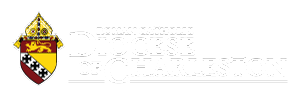by Father Bryan Babick, SL.L.
In my last column I made the observation that each time we celebrate Mass we fulfill Jesus’ instruction to “do this in memory of me,” which He gave to His disciples on Holy Thursday night. “This” referred to taking bread and wine to offer up as the “new and eternal,” sin-forgiving sacrifice to God, replacing the sacrifice of animals commanded in the Book of Leviticus. In Leviticus God required His people to offer animals “without blemish” as sacrifices for their sins – the innocent for the guilty. This is why John the Baptist was so prophetic when he said of Jesus, “behold the Lamb of God, who takes away the sins of the world.” The Baptist knew that Jesus, the innocent, would be sacrificed on the Cross for us, the sinful.
The Crucifixion was overshadowed by the glory of Jesus’ Resurrection. The Passover feast begun in Exodus had new meaning: in the “new and eternal Covenant” God would save us not by passing over the faithful to strike down the sinful so that they could enter an earthly Promised Land. Rather He would make it possible for us to pass over from death into eternal life in the true Promised Land of heaven, just like His Son.
Saint John speaks so eloquently about this heavenly Promised Land in the Book of Revelation. He talks about his vision of the Temple in the heavenly Jerusalem. It is in this Temple that God is worshiped. John describes a huge throne therein, around which twenty-four elders in white garments sit. Just in front of God’s throne are “four living creatures” that John says resemble a lion, an ox, a human- like creature, and an eagle. These are the traditional images which represent the four Evangelists because of the content and literary style of their Gospels.
Nonetheless, Saint John also witnesses a Lamb “that seemed to have been slain.” This Lamb stands before the throne of God, in the center of a semi-circle with the four living creatures, as he breaks open the seals of a scroll which contains God’s Word & plan for His people.
John sees the throne, the elders, the living creatures, and the Lamb from the opposite side of an altar, under which rests the souls of those who had been slaughtered for witnessing to their faith in the Lamb. He says that all of those who are present praise God by singing, “holy, holy, holy is the Lord God almighty…” after which they fall down in His presence. There are even angels who come to the altar and burn incense in golden censers that John says represents the prayers of “all the holy ones.”
Does all of this not sound like what we do at Mass? Those who come to church sit before the altar of the Word, or pulpit, at which God’s Word is proclaimed. That Word is “unsealed” for us through its preaching by the priest, or deacon, who wear a white garment because they are joined to the Lamb in a special way through Ordination. The Faithful then come before an altar superior to the first and sing “holy, holy, holy Lord God of power and might…” after which they kneel down so that when the Lamb becomes present in the bread & wine they may imitate the posture of those in God’s heavenly court. Sometimes incense is also utilized, symbolizing prayers rising up to and pleasing God.
So what does all of this have to do with the Mass? If we say that the Mass is simultaneously Holy Thursday, Good Friday, and Easter Sunday, then we must also say that the Mass is a participation in the worship of God in the Heavenly Temple. Without Holy Thursday, Good Friday, and Easter Sunday, none of the vision Saint John reports is real. With them on the other hand, the “slain Lamb” becomes the One crucified on Good Friday, who lives despite his wounds because of His Resurrection on Easter Sunday. The new Divine Ritual for perpetuating these realities was given Holy Thursday night, when Jesus told us that the Lamb would be made present in bread and wine.
It is clear, then, that in the Mass not only are the events of Holy Thursday, Good Friday, and Easter Sunday present, but it is also clear that the Mass is a participation in and an imitation of the Liturgy of the Temple in Heaven. In Eucharist Prayer I we beg, “almighty God, we pray [to allow] that your angel may take this Sacrifice to Your altar in Heaven” because the altar on earth is united and fused to the altar in heaven. We must go through the altar to get into God’s court. Thus, the Mass is heaven on earth.

